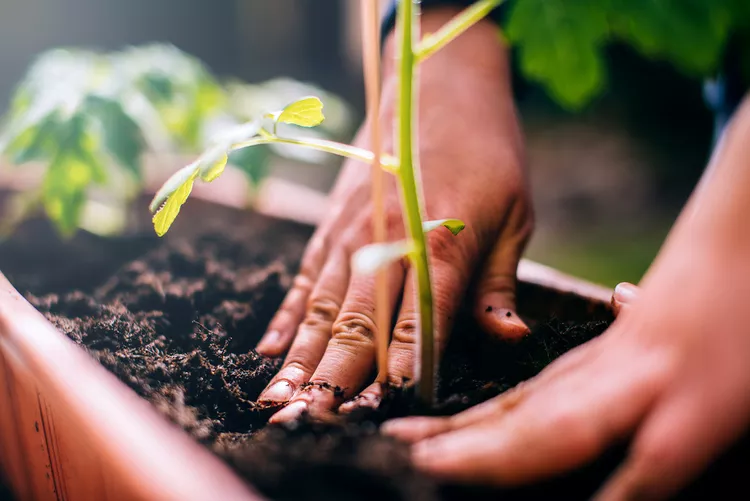Can you reuse potting soil after your flowers fade, temperatures drop, and you empty your containers and put them away for the winter? It’s tempting to keep and reuse what you have since replacing potting soil can be pricey, especially when you have a lot of potted plants. But this lightweight mix of compost, peat, perlite, and other materials doesn’t last forever.
Plants use up the nutrients in it as they grow, and the mix can become compacted and filled with roots. Sometimes pests, diseases, and weeds can take up residence, ready to pop back up when you replant in the mix. However, you can remedy these issues and get another use out of your potting soil with a little extra work.
Can You Reuse Potting Soil? Here’s How
It’s generally fine to reuse high-quality potting soil if whatever you were growing in it was healthy. But can you reuse potting soil that’s been home to pests? If you noticed pests or diseases on your plants, it’s best to sterilize the mix to avoid infecting next year’s plants. First, remove roots, grubs, leaves, and other debris from the old potting soil. Then, decide on the best method for banishing microbes and insects.
One technique for sterilizing soil is called solarizing. It involves putting old potting soil in lidded, five-gallon buckets (available at The Home Depot) or black plastic bags tightly tied shut and leaving them in the sun for 4-6 weeks. The heat builds up inside the buckets or bags just enough to kill bugs and pathogens.
You also can sterilize old potting soil in your oven. Place it in an oven-safe pan, cover with foil, and bake it at 180 to 200 degrees Fahrenheit for 30 minutes (the soil will produce an earthy smell). It’s also important to check the soil temperature with a candy or meat thermometer (available at Williams Sonoma) to make sure it stays below 200 degrees. Higher temperatures can release toxins. When it’s done, remove the soil from the oven and keep it covered until it cools.
Microwaving is another option. Put old, moistened potting soil in quart-size, microwavable containers. Cover them with microwavable lids that you can poke ventilation holes in or leave cracked to allow steam to escape. Heat at full power for about 90 seconds per two pounds of soil. Remove the containers, cover the vent holes with tape, and let the soil cool completely before using it.
Once your old potting soil has been sterilized, you’ll need to replenish its nutrients. You can combine equal parts of new potting soil with the old and add a dose of slow-release fertilizer pellets (available at The Home Depot) according to package directions. Or, you can mix in one part compost to three or four parts of your old potting soil. Besides adding nutrients that plants need, fresh potting soil and compost will help keep the mix from compacting.
If you’re storing your refreshed potting soil until it’s time to plant again, keep it in covered buckets or clean trash cans (available at Walmart) or tubs with lids (available at Target).
How Can You Reuse Potting Soil You’ve Sterilized?
Reuse your clean potting soil in containers for vegetables, flowers, houseplants, or whatever you’d like to grow. If you’re not up for sterilizing and refreshing old potting soil, you can still put it to use instead of throwing it out. It can be dumped directly out of your containers and into established beds and borders. You can use it in raised beds or wherever your yard has holes or eroded areas. It can also be mixed into compost piles. The old potting soil you reuse can help you save money for what all gardeners want: more plants.




















